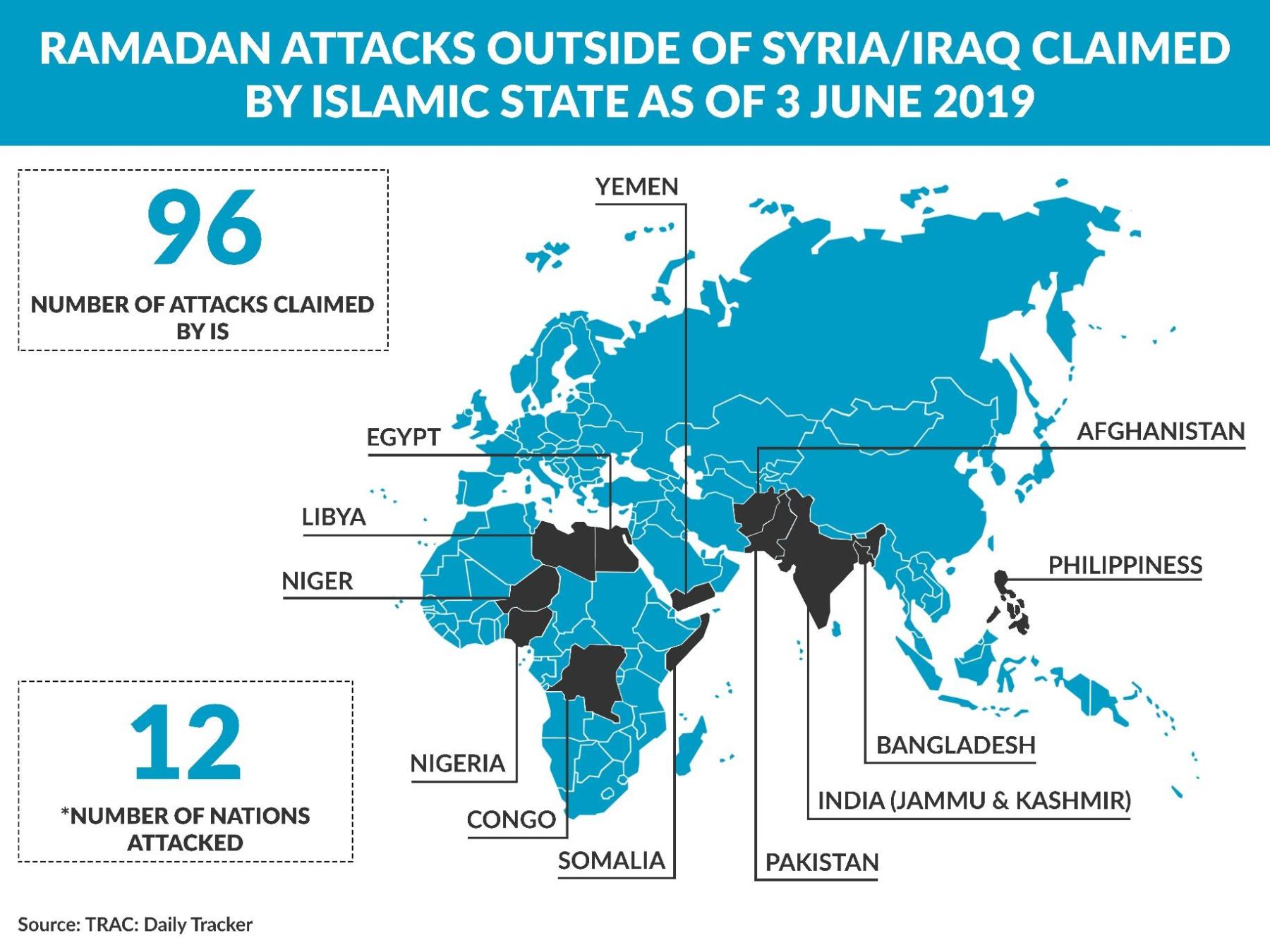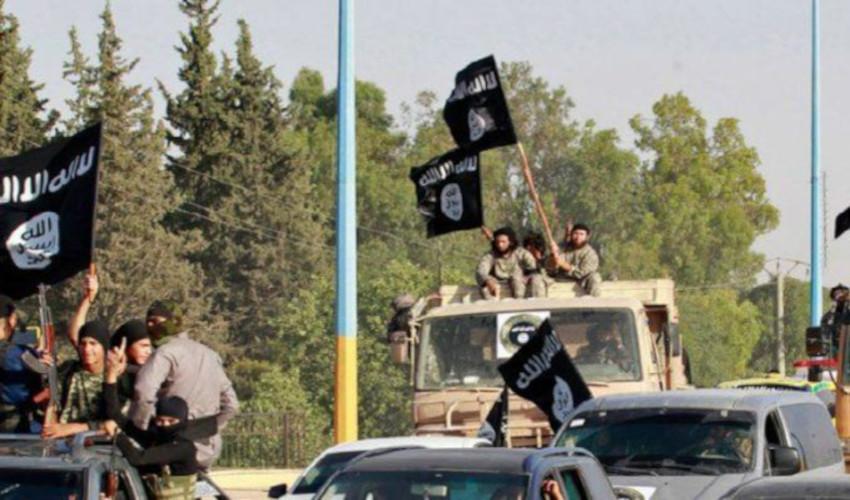ISIS ‘War of Attrition’: What does it mean & How is it different from Al Qaeda
Introduction
Pro-IS media released a video calling for 'war of attrition' across 'Wilayah' on June 4 reiterating Baghdadi's Call for action to sustain the jihadi group’s operational momentum. While the jihadi group seems to be on an operational path of that of its predecessor, Al Qaeda, there continue to remain some glaring differences in the ‘War of Attrition’ launched by the two groups. The four basic facets that differentiate the two have been the expanse, sophistication, rationale and the information dissemination after an attack.

IS first claim of attack in Mozambique on June 4
The Geographical Spread

While the group, after losing territory in Iraq and Syria has opted for a more aggressive ‘lateral expansion’ model as was noticed in case of announcement of new Wilayah (Province) in India, West Africa and Pakistan. This view is further bolstered by independent reports which indicate that the jihadi group claimed 96 attacks across 12 countries during the holy month of Ramadan. While group has hinted at operationalizing other areas like the Turkey Province and Caucasus, absence of any attack so far is yet to witness a claim from the aforementioned ‘Wilayah’s’.
In case of al Qaeda, the group has failed to launch beyond the confines of North and east Africa and parts of Sahel, Yemen as well as in Syria’s Idlib. The series of outreach mechanisms characterised by Zawahiri’s Dawaa series of lecture has so far failed to convert into major operations on ground. This in turn has resulted in limited impact of the outreach mechanism initiated by the group’s leadership.
Sophistication
Previously, the sophistication of attacks in relation to the group was highly skewed with IS- central demonstrating near conventional operational capabilities; IS linked affiliates demonstrating a more unconventional hit and run capabilities as was witnessed in Egypt and the Philippines post Marawi and ‘lone wolf’ unsophisticated attacks by IS- inspired entities.
However, after the end of the territorial Caliphate and increased reliance on a more decentralized pattern of operations, the Wilayah have taken a more prominent role and remains pivotal in the latest ‘War of attrition’. The high casualty attacks in Nigeria, Congo, Egypt’s Sinai region as well as Sri Lanka in the preceding weeks, the latter by an ‘IS- Inspired’ module also demonstrates the sophistication of planning and execution by entities not directly linked to the jihadi group’s central leadership. Unprecedented attacks like those witnessed in Mozambique on June 4 further adds credence to the lateral expansion model of IS, which, at least for the time being, seems to pay dividends.
Rationale

Al Qaeda affiliate Al Qaeda in Arabian Peninsula Issues advisory to locals from approaching military installations in Shabwa
While Al Qaeda seeks to portray its image as a more ‘Humane’ and ‘responsible’ operator as compared to the savagery of its nemesis IS. This view is further bolstered by the fact that a sizable portion of the media release by AQ is more focused on the ‘savagery’ of IS. This typically manifests in release of ‘advisories’ and ‘condolences’ over collateral damages- actual or potential, as was witnessed in the latest advisory in Shabwah governorate, as well as a video release alleging brutal execution of a supposed spy by IS from an unspecified locale in Yemen. Moreover, Al Shabab (an AQ affiliate operating in East Africa) official Abu Abdirahman Mohamed Warsame released a similar ‘regret’ over collateral damage on May 13, amidst the jihadi group’s operations in Somalia.
IS, on the other hand seems to operate on a more ‘practical’ and ‘hands-on’ approach justifying its choice of targets and targeting thereof. This view is further bolstered by the justification of the group of killing of fellow Muslim’s as either conspirators working with the government or adhering to ‘deviant’ ideologies. The approach is a more long term strategy in gaining the hearts and minds campaign which both IS and AQ continue to capitalize. The short term returns for the time being seems to favor the former as highlighted in the preceding section.
The Propaganda Warfare
Despite a long-drawn campaign to curb the militant group’s social media presence, both IS and AQ continue to evolve and sustain an extensive media presence through channels which facilitate their outreach mechanism. The dissemination of Baghdadi’s speech into nearly 20 languages, including Portuguese and Dhivehi among other is a case in point. It not only demonstrates the sizable support base for the group but its intention and capabilities to reach out to its followers and supporters across geographies, including those in which the group does not have any credible operational presence.
Given precedence, Al Qaeda, seems to adhere to a relatively less aggressive propaganda media strategy as compare to IS. The failure to match the latter’s capabilities on the ground can also be attributed to this stance by AQ leadership, thus triggering a cyclical effect on its operational capabilities.
What to Expect?
While the ‘War of attrition’ by itself is unlikely to result in a reemergence of IS territorial Caliphate in its erstwhile strongholds or the newer territory it currently operates, however is expected to provide a ‘framework’ under which all the attacks will be contextualized. Furthermore, given the aforementioned factors, the strategy is certainly expected to be more aggressively initiated, especially in the backdrop of the territorial losses. This also puts the limelight on not just the Wilayah (Provinces) but also IS inspired entities which have demonstrated their capabilities in launching equally sophisticated attacks far beyond the erstwhile IS held territories. Moreover, the hands
on, practical approach as opposed to the more practical and humane approach adopted by AQ, gives credence to the group which is more likely to appeal to the disgruntled radicalized elements. The strong media outreach and ‘acknowledgement’ of operations as was recorded in case of Mozambique and Sri Lanka is not only expected to trigger more attacks in the said countries but may potentially inspire other radicalized entities to undertake operations with similar deadly consequences.


focal One
9 months ago